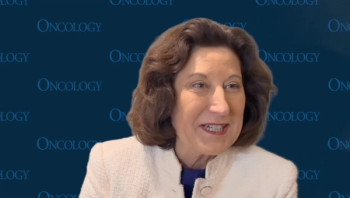
RT Plus Trastuzumab Have Little Effect on LVEF in HER2+ Breast Cancer
Trastuzumab plus low-dose radiotherapy does not have a significant effect on left ventricular ejection fraction changes in HER2-positive breast cancer.
A new study found that concurrent trastuzumab and radiotherapy (RT) at low doses does not have a significant effect on left ventricular ejection fraction (LVEF) changes in HER2-positive breast cancer patients. Changes to this measure of cardiac output were due more to doxorubicin treatment.
“Cardiac injury is a potential side effect that might arise from RT as well as chemotherapy,” wrote study authors led by Shelly X. Bian, MD, of the University of Southern California in Los Angeles. “Trastuzumab has been correlated with congestive heart failure, and RT has been associated with increased ischemic heart disease and heart failure in the long term.” Whether standard RT delivered concurrently with trastuzumab results in cardiac toxicity remains understudied.
This study was a retrospective review of nonmetastatic HER2-positive breast cancer patients treated at one institution with concurrent trastuzumab and breast or chest wall RT between 2008 and 2015. There were 88 total patients, and the median follow-up period was 45 months; results were
A total of 41 patients received right breast or chest wall RT, and 47 received left breast or chest wall RT. The mean RT dose to the heart was 1.10 Gy for right-sided patients and 3.63 Gy for left-sided patients (P < .001). All patients also received chemotherapy; 31 received doxorubicin.
In the full cohort, there was a significant decrease in LVEF of 3.0% from pretreatment to posttreatment. An analysis showed that there was a significant effect of doxorubicin on LVEF change (P = .013); for patients who received that agent, the mean LVEF change was −5.6%, compared with −1.5% in those who received other chemotherapy agents.
Right-sided patients had a larger mean LVEF change, at −4.5%, compared with −1.7% in left-sided patients, but the effect of RT side on LVEF change was not significant (P = .088). After controlling for doxorubicin, there was no association seen between RT dose to the heart and LVEF change. No cardiac events were reported in the study.
The study was limited by its retrospective design, as well as its relatively small sample size. Also, though LVEF is a reliable measure of cardiac function, there may be more subtle cardiac abnormalities that went undetected.
“Our results suggest that with low heart doses, concurrent trastuzumab and RT do not have a significant effect on acute changes in LVEF,” the authors concluded. “The main determinant of LVEF change was attributed to doxorubicin use.”
Newsletter
Stay up to date on recent advances in the multidisciplinary approach to cancer.
















































































